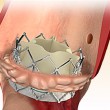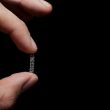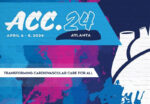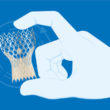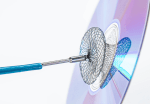Severe mitral valve insufficiency (MI) has been associated to the progressive deterioration of left ventricular function, cardiac and kidney failure, and increased mortality. Complete medical treatment at maximal doses and surgery are indicated. For those at high risk or those with ventricular function deterioration, edge-to-edge repair has been shown an excellent alternative. The use of<a href="https://solaci.org/en/2024/07/02/2-year-outcomes-of-transcatheter-mitral-valve-replacement-with-intrepid/" title="Read more" >...</a>
Third Generation Balloon-Expandable and Self-Expanding Valves: TAVR Meta- Analysis
TAVR’s significant advance has driven the development of valve technology, which is currently in its third generation. Even though outcomes have improved, randomized studies are yet to compared balloon-expandable (BEV) vs self-expanding (SEV) valves in randomized studies, and we only have information from different analysis with contradicting conclusions. This was a meta-analysis of 16 studies<a href="https://solaci.org/en/2024/05/24/third-generation-balloon-expandable-and-self-expanding-valves-tavr-meta-analysis/" title="Read more" >...</a>
EuroPCR 2024 | Self-Expanding Valves (ACURATE Neo2) vs. Balloon-Expandable Valves (Sapien 3 Ultra): 1-Year Follow-up Results
Comparing different transcatheter heart valves (THVs) is necessary to obtain relevant information that facilitates the selection of the appropriate valve for each patient. A previous study compared early outcomes between the self-expanding ACURATE Neo2 valve and the balloon-expandable Sapien 3 Ultra valve. However, there are no comparative data on these two valves in the medium<a href="https://solaci.org/en/2024/05/22/europcr-2024-self-expanding-valves-acurate-neo2-vs-balloon-expandable-valves-sapien-3-ultra-1-year-follow-up-results/" title="Read more" >...</a>
Aortic Stenosis Progression Evolution
Aortic stenosis is an increasingly common valvulopathy because people are living longer now. A present, the main treatment consists of surgical (SAVR) or transcatheter aortic valve replacement. (TAVR). One of the main challenges of this disease is its progression. The European guidelines recommend Doppler echocardiograms every 2 to 3 years for mild cases, mildly calcified,<a href="https://solaci.org/en/2024/05/15/aortic-stenosis-progression-evolution/" title="Read more" >...</a>
TAVR in Bicuspid Valves
Bicuspid aortic valve (BAV) disease affects 1%-2% of the population and manifests with severe aortic stenosis in the middle-aged. It characterizes for a very different anatomy with more calcification than the tricuspid aortic valve. At present, surgical aortic valve replacement (SAVR) is the first treatment indication. TAVR in this scenario has shown, in different studies,<a href="https://solaci.org/en/2024/05/07/tavr-in-bicuspid-valves/" title="Read more" >...</a>
Reinterventions in TAVR with Self-Expanding Valves
TAVR treatment of severe aortic stenosis is becoming more and more common, showing comparable evolution, or even superior in some studies when using the femoral approach, vs. surgical aortic valve replacement (SAVR). One of the current challenges is TAVR durability vs. SAVR. Even though 9 or 10 years has been deemed acceptable by current standards,<a href="https://solaci.org/en/2024/05/03/reinterventions-in-tavr-with-self-expanding-valves/" title="Read more" >...</a>
ACC 2024 | SMART Trial: Self-Expanding or Balloon-Expandable TAVR in Patients with Small Aortic Annulus
Patients with severe aortic stenosis and a small aortic annulus face an increased risk of deteriorated valvular hemodynamic performance and adverse cardiovascular clinical outcomes after undergoing transcatheter aortic valve replacement (TAVR). This study, a prospective multicenter randomized trial, aimed to compare the efficacy and safety of two types of valves: the supra-annular self-expanding EVOLUT (SEV)<a href="https://solaci.org/en/2024/04/12/acc-2024-smart-trial-self-expanding-or-balloon-expandable-tavr-in-patients-with-small-aortic-annulus/" title="Read more" >...</a>
ACC 2024 | DEDICATE Trial: Transcatheter or Surgical Treatment of Aortic Valve Stenosis
In recent years, TAVR has been increasingly used; however, when it comes to younger, lower risk patients, its use is still challenged. In this context, there is limited information and we lack randomized studies on “real world” cohorts. The DEDICATE randomized 1.414 patients over 65 with severe symptomatic aortic stenosis. 701 of these patients received<a href="https://solaci.org/en/2024/04/11/acc-2024-dedicate-trial-transcatheter-or-surgical-treatment-of-aortic-valve-stenosis/" title="Read more" >...</a>
TAVR in the Different Types of Aortic Stenosis
Aortic stenosis (AS) is classified according to gradient into high flow and high gradient (D1), low flow-low gradient with reduced ejection fraction (D2), and paradoxical low flow-low gradient with conserved ejection fraction (D3). D3 AS is characterized by ≥50% ejection fraction, but with systolic volume index ≤35 ml/min. Post TAVR evolution of D2 and D3<a href="https://solaci.org/en/2024/04/05/tavr-in-the-different-types-of-aortic-stenosis/" title="Read more" >...</a>
Left Atrial Appendage Closure and Concomitant Transcatheter Intervention: Can We?
Several scientific societies support performing left atrial appendage occlusion (LAAO) as a stand-alone procedure, even though it is often associated to other cardiomyopathies requiring transcatheter intervention. Though still controversial, combining LAAO and any other cardiac intervention might reduce hospitalizations, as well as the need for additional punctures, anesthesia, red tape, a longer stay and higher<a href="https://solaci.org/en/2024/02/06/left-atrial-appendage-closure-and-concomitant-transcatheter-intervention-can-we/" title="Read more" >...</a>
